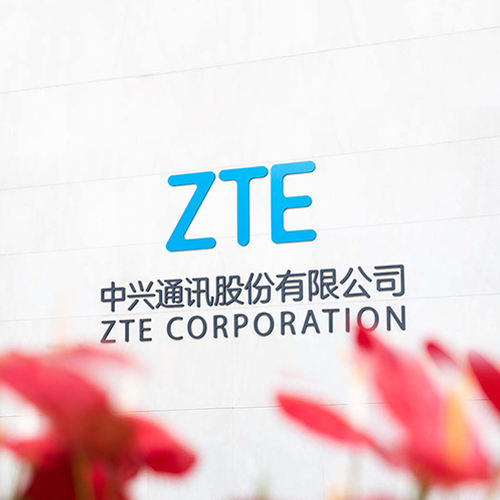Baishan, China, November 18, 2025 – ZTE Corporation (0763.HK / 000063.SZ), a global leading provider of information and communication technology solutions, in partnership with China Unicom Jilin, has successfully deployed a comprehensive 5G uplink enhancement solution at the Wanliang Ginseng Market in Baishan City, Jilin Province. This integrated technical innovation addresses critical digital inclusion challenges by transforming network coverage into meaningful economic participation for rural merchants engaged in live-streaming e-commerce.
The Wanliang Ginseng Market represents the world’s largest ginseng trading hub, accounting for 80% of China’s and 70% of global ginseng transactions. This rural marketplace serves as a critical economic engine, supporting thousands of farmers and merchants who rely on digital commerce platforms to reach nationwide markets. However, despite comprehensive 5G network coverage, merchants encountered a fundamental connectivity barrier: traditional 5G networks optimized for downlink traffic proved insufficient for the substantial uplink capacity demands of simultaneous high-definition live-streaming.
During peak trading hours, the convergence of hundreds of concurrent live-streamers transmitting high-definition video simultaneously created network congestion that manifested as frequent interruptions, transaction failures, and lost sales opportunities. Traditional 5G frame structures allocate resources in a three-to-one ratio favoring content consumption, creating a fundamental mismatch with live-streaming commerce requirements. Peak-hour network utilization exceeded seventy percent, with individual cells supporting seventy to ninety concurrent users who exhausted available uplink resources.
ZTE’s solution addresses this challenge through systematic integration of four complementary technologies deployed in a phased enhancement approach. The initial phase implemented 1D3U frame structure technology, rebalancing uplink-to-downlink resource allocation from the standard one-to-three ratio to a three-to-one configuration. This software-level optimization increased single-cell uplink traffic by over 100%, establishing the foundation for subsequent enhancements.
The second phase deployed QCell digital distribution system with beamforming antennas, replacing traditional macro station coverage with a distributed architecture that doubled cell count while multiplying total system capacity. Beamforming antennas provide spatial signal isolation critical for the large open-market hall structure, while inter-frequency planning eliminates co-channel interference challenges. This hardware transformation increased total uplink traffic by 93%,supporting up to 143 concurrent live-streamers per cell.
Advanced optimizations integrated uplink MU-MIMO spatial multiplexing technology and packet aggregation algorithms specifically designed for live-streaming traffic characteristics. Uplink MU-MIMO technology addresses the single-stream limitation prevalent among live-streaming user terminals, achieving spectral efficiency improvements of 15% under 60% PRB utilization conditions, with gains reaching up to 55% at higher loads. Packet aggregation optimization leverages the unique traffic patterns of live-streaming applications—characterized by continuous low-traffic small packets, multiple concurrent users, and time-insensitive delivery requirements—reducing PRB utilization by up to 30% under equivalent load conditions.
The cumulative impact of this integrated solution delivers a 583% uplink capacity increase, representing a transformative enhancement that enables merchants to conduct business rather than struggle with connectivity. Performance metrics demonstrate substantial improvements: user uplink speeds tripled from approximately 20 Mbps to 60 Mbps, while peak PRB utilization decreased from over 90% to below 60%. The solution now supports 143 concurrent live-streamers per cell—more than five times previous capacity—enabling each market stall to average 1.6 active streaming terminals.
Business outcomes reflect the successful transformation of coverage into commerce. Annual e-commerce transactions exceed 200 million RMB, facilitated by over 500 enterprises conducting business through digital channels and more than 3,000 professional live-streaming merchants actively engaged in digital commerce. This economic participation directly benefits approximately 50,000 farmers who supply the market, creating a sustainable ecosystem that transforms connectivity from passive infrastructure into active economic empowerment.
The solution demonstrates exceptional operational excellence, maintaining continuous service with zero network-related complaints—a remarkable achievement given the high user density and intensive traffic patterns characteristic of live-streaming commerce environments. This sustained performance establishes a proven operational track record that validates both technical reliability and user satisfaction.
The digital inclusion impact extends beyond technical metrics to encompass social transformation. The majority of live-streaming merchants are women entrepreneurs, highlighting gender empowerment achieved through technology-enabled economic opportunity. Traditional rural merchants now reach national markets without intermediaries, improving pricing power while accessing broader customer bases. The solution demonstrates how application-specific network optimization can transform rural populations’ ability to realize digital inclusion benefits, closing the gap between network deployment and meaningful economic participation.
Looking forward, ZTE and China Unicom Jilin continue to expand this proven model to additional rural markets where live-streaming commerce demonstrates strong demand. The standardized deployment approach refined through Wanliang Market experience enables rapid rollout while maintaining operational excellence. Future enhancements will integrate 5G-Advanced capabilities including ultra-reliable low-latency communication optimized for next-generation live-streaming applications, ensuring the solution remains at the forefront of digital inclusion innovation.
